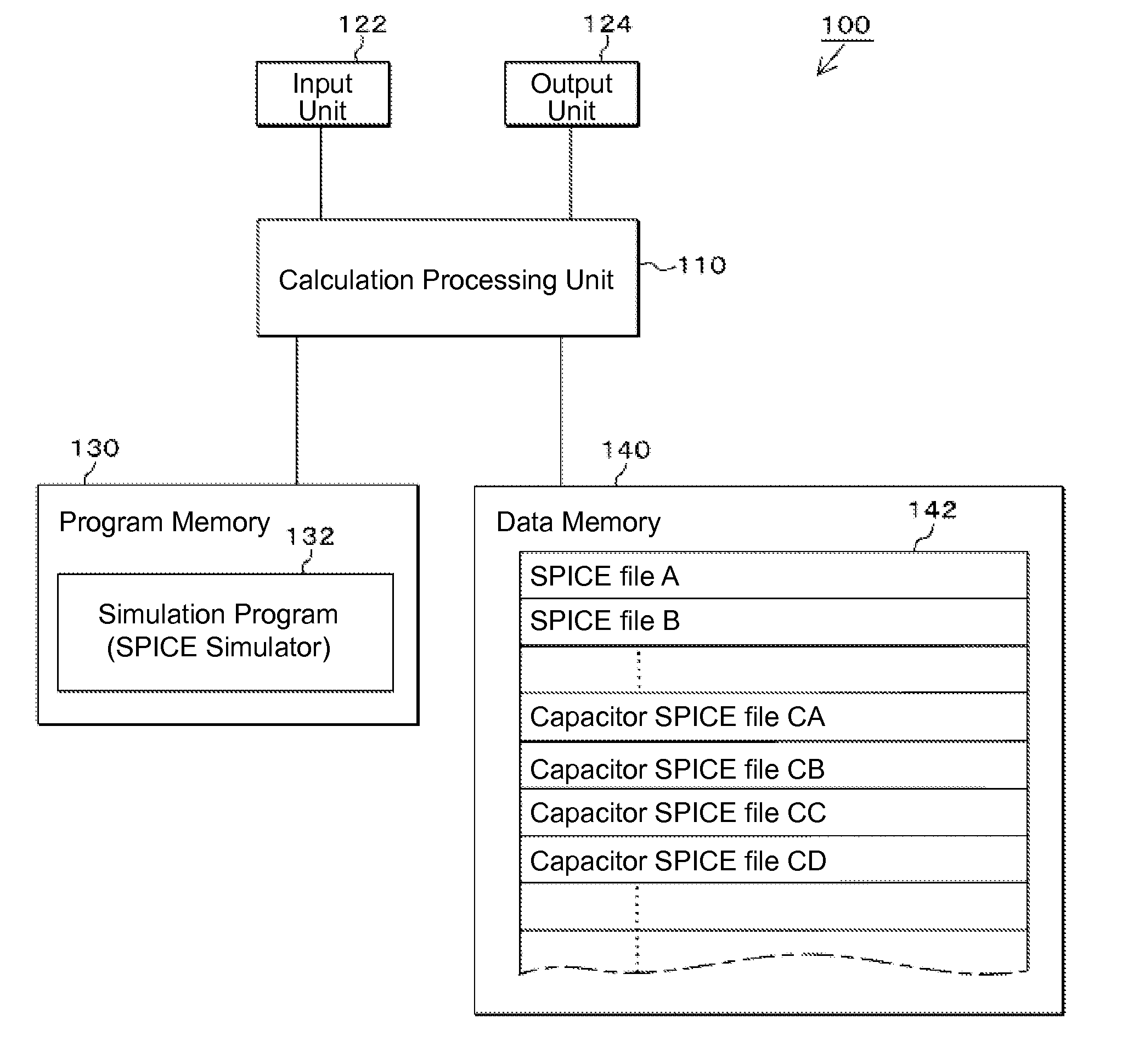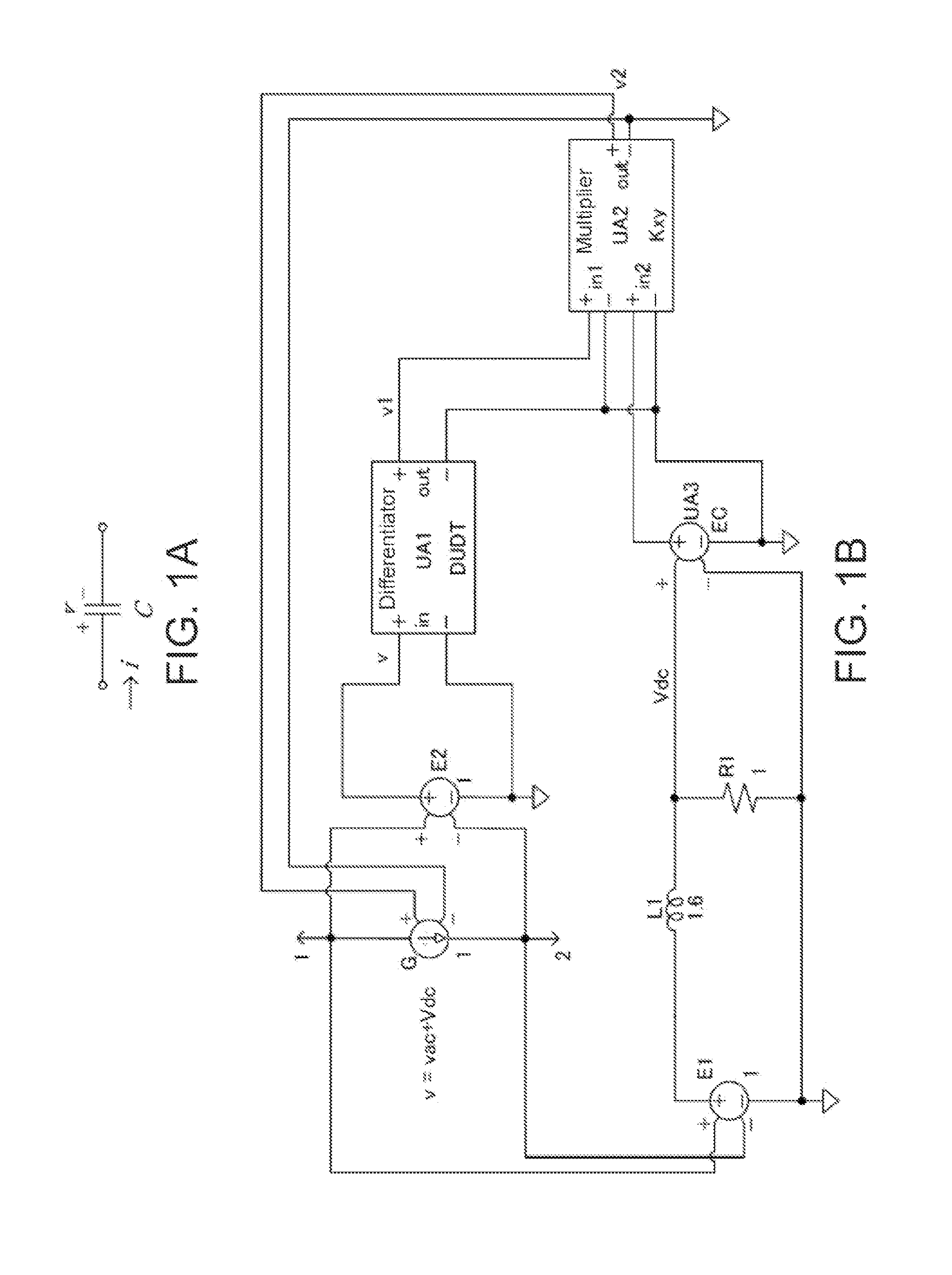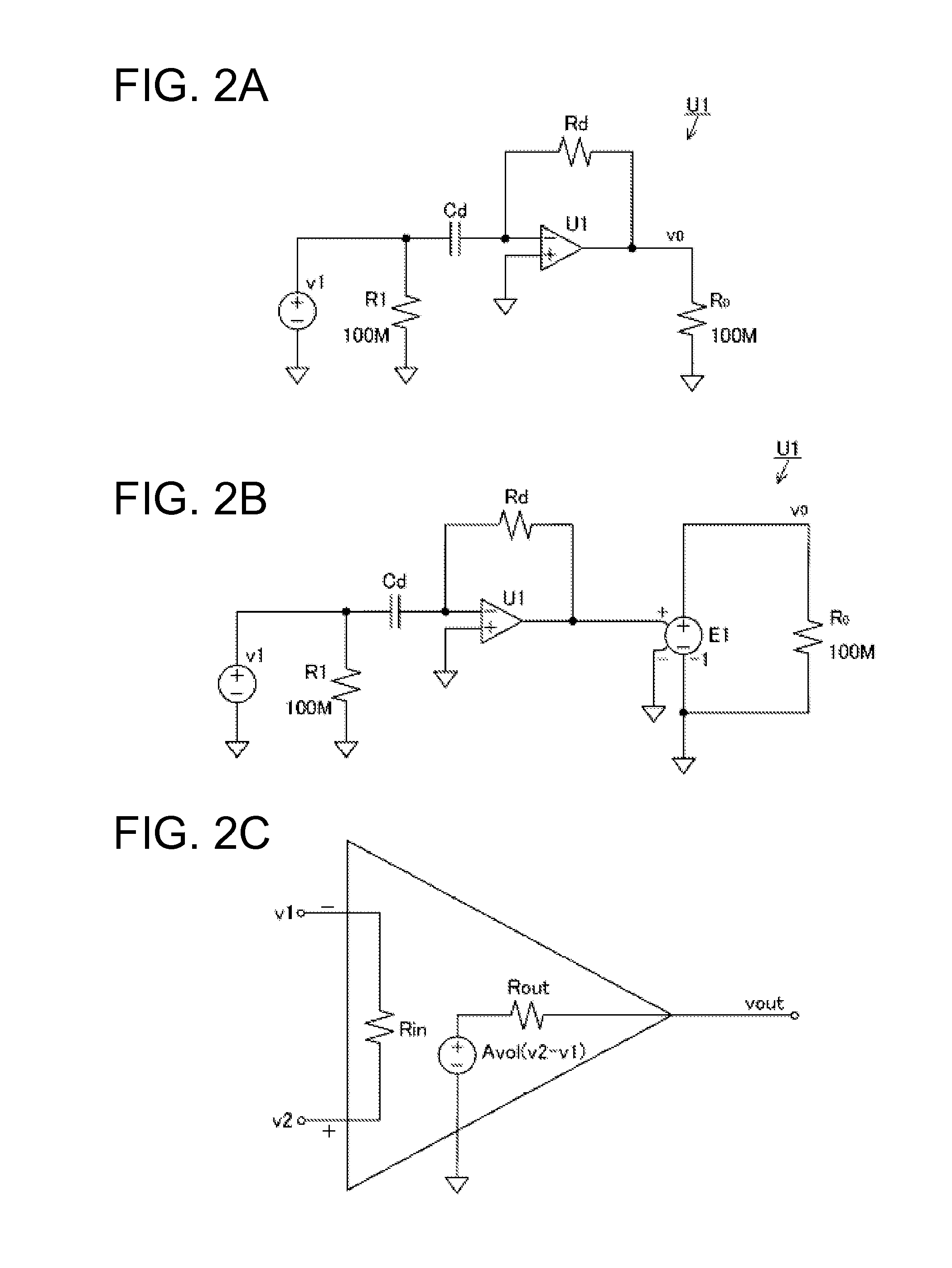Circuit simulation model of capacitor, constructing method of simulation model, method of circuit simulation, circuit simulator
a capacitor and simulation model technology, applied in the field of circuit simulation model, capacitor simulation model, circuit simulation model, constructing method of simulation model, etc., can solve the problems of incomplete failure of electronic device design, difficult to obtain highly accurate spice model, and complicated frequency characteristics of capacitor impedance and more particularly frequency characteristics in high-frequency bands, etc., to achieve accurate and suitable implementation of circuit design and accurate representation of characteristics
- Summary
- Abstract
- Description
- Claims
- Application Information
AI Technical Summary
Benefits of technology
Problems solved by technology
Method used
Image
Examples
embodiment 1
[0049]First, the case of the idealized C circuit model will be explained. As shown in FIG. 1A, in the idealized C circuit model of the capacitor, an equivalent circuit is constituted of one circuit element, which is a capacitance element C. Generally, a nominal capacitance is used in this case. In the same figure, “v” denotes a total voltage applied across the capacitor, which equals a voltage across both ends of the capacitance element C. A current through the capacitor is denoted by “i”, which equals a current through the capacitance element C. The impedance characteristics represented by the idealized C circuit differ so significantly, especially in a high frequency band, from those in an actual product that the model cannot be suitably used for a circuit design and simulation. However, the idealized C circuit model can be conveniently used in an early stage of the circuit design or for predicting the circuit characteristics.
[0050]The voltage “v” applied across the capacitance el...
embodiment 2
[0091]Next, the case of an RC circuit model will be explained. When the loss due to a resistance needs to be taken into account, a series resistance is added to the idealized C circuit. FIG. 3A shows a circuit configuration of the RC circuit model. A capacitance element C is a nominal capacitance. A resistance element R is derived from a dielectric loss tangent Tan δ that is obtained by the same measurement frequency and measurement voltage as those of the idealized C circuit. This equivalent circuit has the same level of accuracy as that of the idealized C circuit model, and is only used in an early stage of circuit design or for predicting circuit characteristics. In FIG. 3A, VC denotes a voltage applied across the capacitance element C. VR denotes a voltage applied across the resistance element R, and “i” denotes a current through the capacitor. The total voltage V applied to the capacitor is equal to the sum of the aforementioned VC and VR, which is expressed by the following Fo...
embodiment 3
[0117]Next, the case of an RLC circuit model will be explained. When the parasitic inductance of the capacitor needs to be taken into account in the above-mentioned RC circuit, an RLC series circuit shown in FIG. 4A is used as an equivalent circuit for the capacitor. The RLC series circuit is the most fundamental and most commonly used equivalent circuit for a capacitor. Because the parasitic inductance is taken into account, frequency characteristics of the impedance of the capacitor, more particularly frequency characteristics of the resonance, are improved in this circuit. In FIG. 4A, vC, vL, and vR respectively denote voltages of the capacitance element C, the parasitic inductance L, and the resistance element R that are connected in series, and “i” denotes a current through the capacitor. The total voltage “v” applied across the capacitor equals the sum of these vC, vL, and vR, and is expressed by the following Formula 31.
v=vc+vL+vR=vac+Vdc Formula 31
[0118]Characteristics of t...
PUM
 Login to View More
Login to View More Abstract
Description
Claims
Application Information
 Login to View More
Login to View More - R&D
- Intellectual Property
- Life Sciences
- Materials
- Tech Scout
- Unparalleled Data Quality
- Higher Quality Content
- 60% Fewer Hallucinations
Browse by: Latest US Patents, China's latest patents, Technical Efficacy Thesaurus, Application Domain, Technology Topic, Popular Technical Reports.
© 2025 PatSnap. All rights reserved.Legal|Privacy policy|Modern Slavery Act Transparency Statement|Sitemap|About US| Contact US: help@patsnap.com



